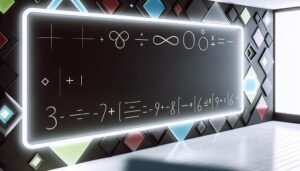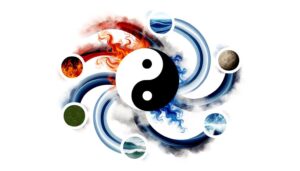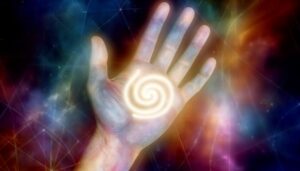How Does the Power Symbolize Meaning in Different Cultures?
The Power of 3 is a potent symbol embodying harmony, completeness, and unity. Rooted in ancient civilizations, it finds relevance in Greek philosophy, where triadic structures signified balance.
In religions, it represents divine order, as seen in Christianity's Holy Trinity and Hinduism's Trimurti. Philosophically, it underscores the interconnectedness of mind, body, and spirit.
Scientifically, it's observed in atomic theory and spatial dimensions. In literature and art, it signifies narrative and compositional stability.
Modern applications in branding and design leverage its intrinsic appeal for effectiveness. This symbol's rich, multifaceted significance continues to resonate deeply across various fields.
There's much more to explore.
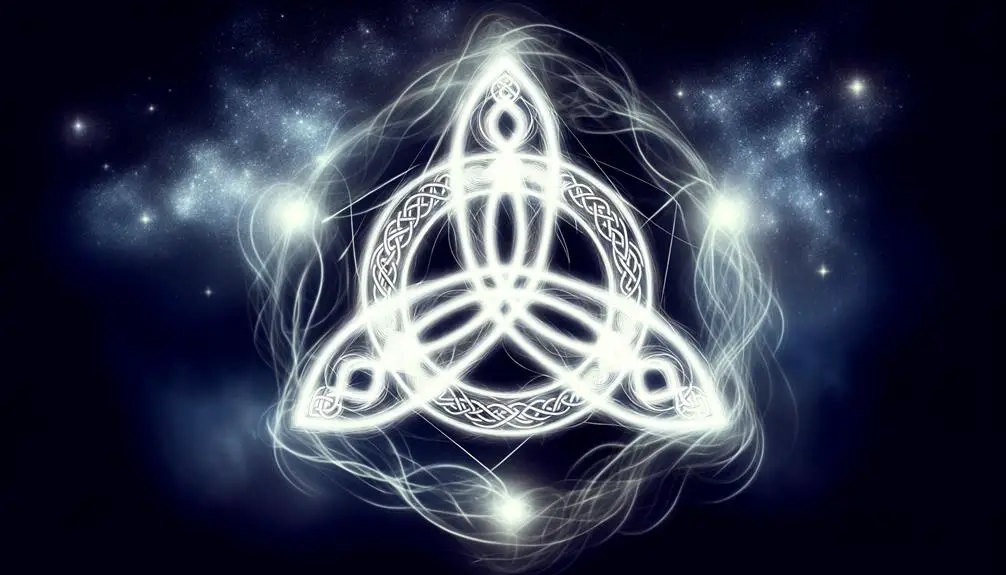
Key Takeaways
- The Power of 3 symbolizes harmony, wisdom, and completeness in various cultures.
- In religion, it represents divine order and spiritual significance through triads like the Holy Trinity and Trimurti.
- Philosophically, it conveys the interconnectedness and balance of mind, body, and spirit.
- Scientifically, it appears in natural phenomena and principles, such as atomic structure and three-dimensional space.
- In literature and art, it signifies narrative unity, stability, and cyclical concepts through triadic compositions.
Cultural Significance
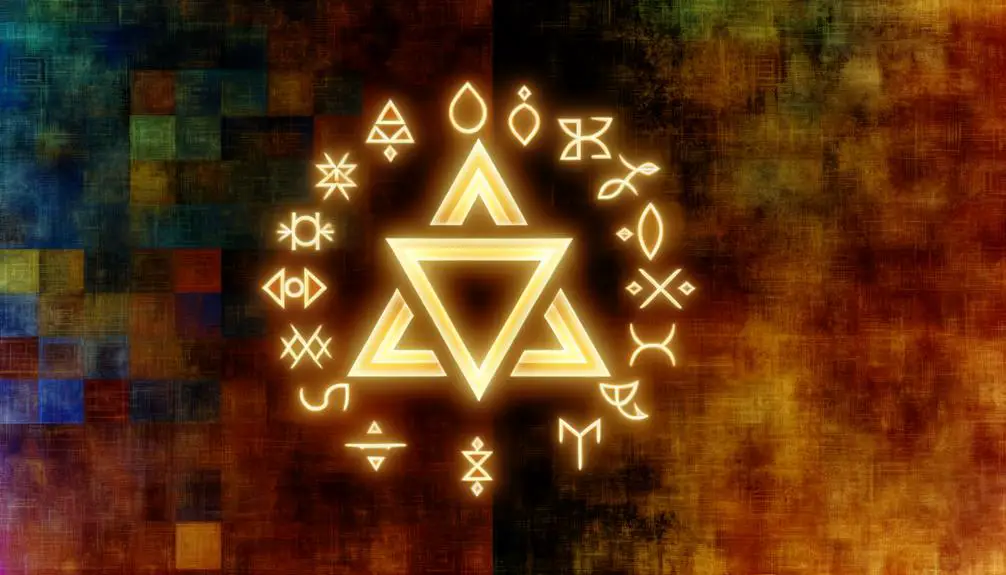
Rooted deeply in various civilizations, the concept of the number three has historically held profound cultural significance, symbolizing principles of harmony, wisdom, and completeness.
Ancient Greeks revered the triad as a manifestation of unity, reflecting the interconnectedness of mind, body, and spirit.
Similarly, in Chinese culture, the number three signifies success and positive outcomes, often linked with the phrase 'good things come in threes.'
In Western traditions, the tripartite structure is evident in storytelling, where narratives often follow a three-act format—beginning, middle, and end—to create a cohesive and compelling arc.
Across these cultures, the number three transcends mere numerology, embodying a universal archetype that aligns with human perception and understanding of balance and wholeness.
Religious Symbolism
The profound cultural resonance of the number three extends into religious symbolism, where it frequently embodies concepts of divine order, perfection, and spiritual significance.
In Christianity, the Holy Trinity—Father, Son, and Holy Spirit—represents a foundational belief in a triune God, illustrating unity in diversity.
Similarly, Hinduism reveres the Trimurti, comprising Brahma, Vishnu, and Shiva, symbolizing creation, preservation, and destruction.
Buddhism emphasizes the Three Jewels: the Buddha, the Dharma, and the Sangha, as essential refuges for spiritual practice.
These triadic structures underscore an inherent completeness, where the number three transcends mere enumeration to signify a profound metaphysical balance.
Religious symbolism thereby leverages the power of three to articulate fundamental truths about existence and the divine.
Philosophical Insights
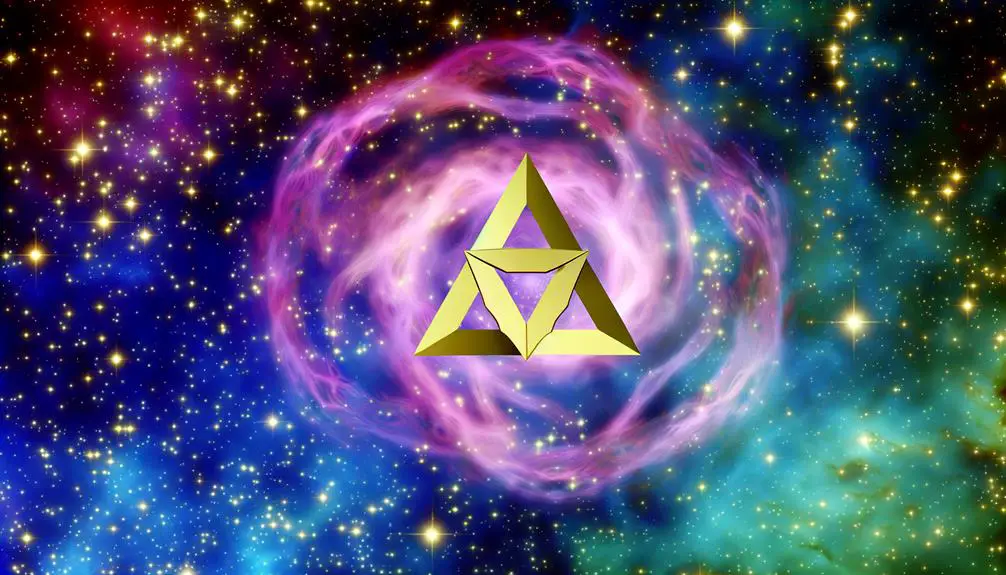
In the domain of philosophy, the concept of triadic unity underscores the interconnectedness of mind, body, and spirit. It suggests a holistic approach to understanding existence.
This triadic framework enriches our comprehension of individual elements. It also invites a deeper analysis of their collective significance and interdependence.
Triadic Unity Concept
Central to the understanding of the Triadic Unity Concept is its philosophical assertion that three interconnected elements form a cohesive and interdependent whole, each component enhancing the significance and function of the others.
This triadic structure is often observed in various philosophical frameworks, where it underpins the complexity and richness of holistic systems.
The concept can be delineated through:
- Interrelation: Each element's identity is defined through its relationship with the other two.
- Balance: The equilibrium maintained by the three components creates stability and harmony.
- Transformation: The dynamic interaction among the elements fosters continuous evolution and growth.
These aspects underscore the profound depth of the Triadic Unity Concept, highlighting its pivotal role in philosophical thought.
Symbolic Depth Analysis
Exploring the symbolic depth of the Power of 3 reveals its profound implications across various philosophical traditions, illustrating how triadic structures convey complex interrelationships and transformative processes.
In Platonic philosophy, the triad of 'The One, The Intellect, and The Soul' represents a metaphysical hierarchy that bridges the abstract and the tangible.
Similarly, Hegel's dialectical triad—thesis, antithesis, and synthesis—captures the dynamic evolution of ideas through conflict and resolution.
Taoism's Heaven, Earth, and Humanity triad underscores the interconnectedness of all existence, emphasizing harmony.
These examples not only highlight the Power of 3's versatility but also its intrinsic capacity to encapsulate unity, progression, and balance. Consequently, the triadic form becomes a potent symbol of philosophical and existential depth.
Scientific Perspectives
From a scientific perspective, the significance of the number three can be observed in various natural phenomena, mathematical principles, and theoretical frameworks that underscore its fundamental role in structuring our understanding of the universe.
Importantly:
- Atomic Structure: Atoms, the building blocks of matter, consist of three primary subatomic particles—protons, neutrons, and electrons. This triad forms the basis of chemical interactions and physical properties.
- Dimensional Space: Our physical reality is perceived in three dimensions—length, width, and height—allowing us to navigate and interact with our environment effectively.
- Triadic Logic: In mathematics and logic, the rule of three is essential in problem-solving and proofs, such as in the Pythagorean theorem, which relates the lengths of the sides of a right triangle.
These examples illustrate the omnipresence and fundamental importance of the number three in scientific inquiry.
Literary Representations
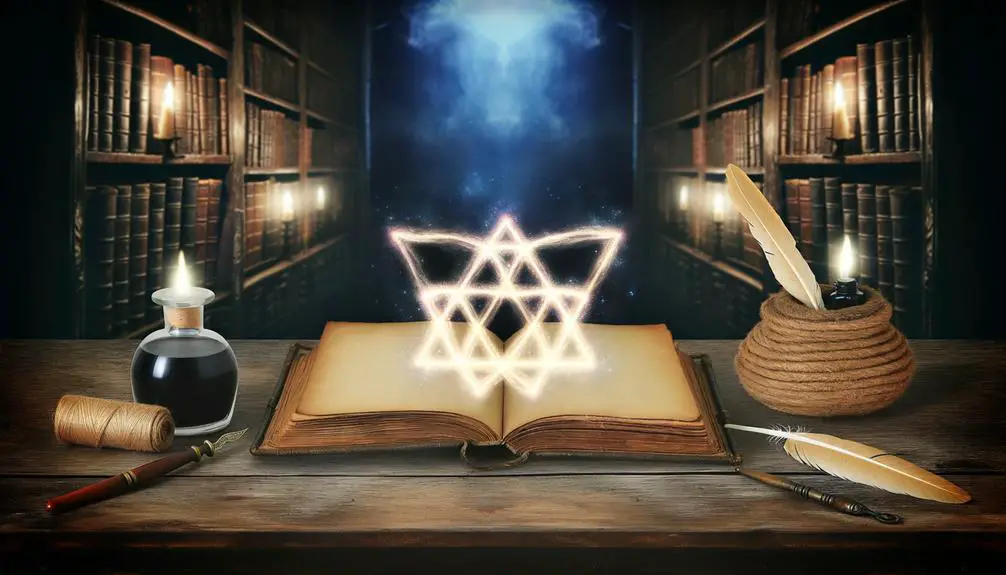
In literature, the number three often symbolizes completeness and wholeness, manifesting in narrative structures, character groupings, and thematic elements to create a resonant and memorable impact on the reader.
Classic examples include the three-part structure of beginning, middle, and end, which provides a natural rhythm to stories.
Additionally, character triads, such as the Three Musketeers or the three witches in Macbeth, offer a dynamic interplay that enriches the narrative.
Thematic elements like life, death, and rebirth often employ the triadic symbol to convey cycles of transformation and renewal.
This pervasive use of three fosters a sense of balance and unity, enhancing the reader's engagement and the story's depth, thereby cementing its enduring appeal in literary tradition.
Artistic Interpretations
Artistic interpretations of the power of three are richly varied, encompassing modern symbolism, historical depictions, and cultural variations.
Contemporary artists often employ the triad to signify balance, harmony, and dynamic progression, while historical art frequently uses triptych forms to convey religious and mythological narratives.
Additionally, cultural contexts imbue the number three with distinct meanings, ranging from sacred trinities in spiritual iconography to fundamental principles in traditional crafts and designs.
Modern Artistic Symbolism
While delving into modern artistic symbolism, one discovers that the power of three frequently manifests in various forms, reflecting a deep-seated resonance with themes of balance, harmony, and completeness. Contemporary artists often utilize this triadic structure to convey complex ideas and emotions.
Key representations include:
- Triptych Artworks: These three-paneled pieces create a narrative or thematic unity, enhancing the viewer's interpretive experience.
- Triangular Composition: This geometric arrangement is employed to direct focus and evoke stability or dynamism within a piece.
- Symbolic Triads: Trios of elements, such as past-present-future or birth-life-death, encapsulate cyclical concepts and existential reflections.
These applications underscore the enduring and versatile nature of the triadic principle in modern artistic expression.
Historical Art Depictions
Exploring historical art depictions, one finds that the triadic motif is not a modern innovation but a timeless principle deeply embedded in ancient artistic interpretations across various cultures.
In Egyptian art, the triad of Osiris, Isis, and Horus symbolized divine harmony and cosmic balance.
Similarly, the ancient Greeks employed tripartite compositions in sculptures and architecture, epitomized by the trio of the Graces, representing beauty, charm, and joy.
In Christian iconography, the Holy Trinity—Father, Son, and Holy Spirit—manifested the theological profundity of unity in diversity.
These artistic interpretations underscore a pervasive understanding of the number three as a fundamental and harmonious element, transcending a mere numeric value to embody a profound symbolic resonance across epochs.
Cultural Symbolic Variations
Frequently manifesting in diverse artistic traditions, the power of three is interpreted through unique cultural lenses, each imbuing the triadic form with distinct symbolic meanings and aesthetic significance.
- Celtic Art: The Celtic triskelion, featuring three interlocking spirals, signifies unity and progress, symbolizing the cycle of life, death, and rebirth.
- Japanese Aesthetics: In Japanese culture, the Mitsudomoe, a threefold tomoe symbol, represents harmony and the interconnectedness of heaven, earth, and humanity.
- Christian Iconography: The Holy Trinity, depicted through triadic symbols like the trefoil or the triangle, encapsulates the Father, Son, and Holy Spirit, underscoring theological doctrine and divine perfection.
These artistic interpretations underscore the profound, multifaceted significance of the triadic form across different cultures.
Modern Applications
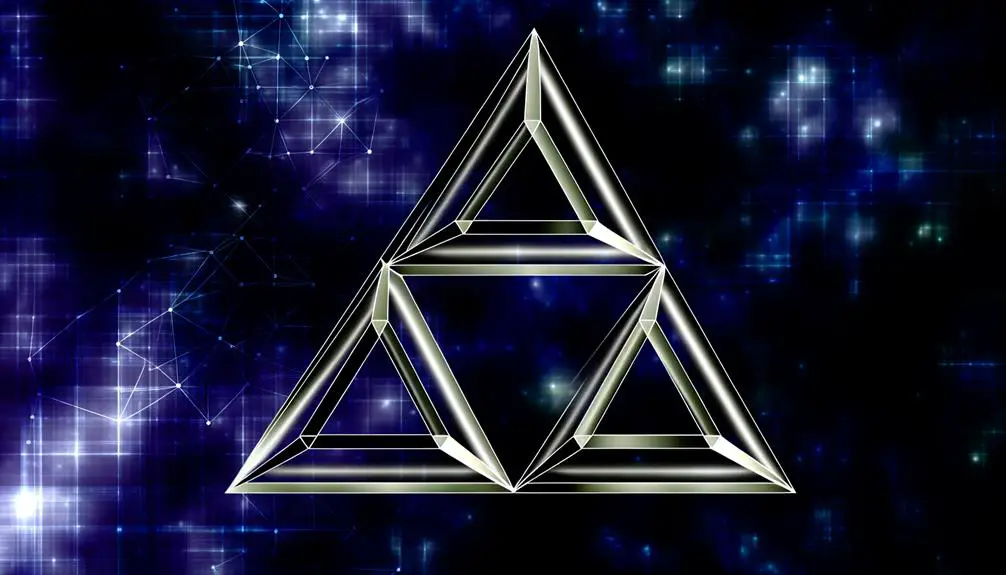
In contemporary society, the power of 3 symbol finds extensive application across various fields such as branding, design, and communication, serving as a potent tool to enhance memorability and engagement.
In branding, triadic structures often encapsulate company values, mission statements, and product features, creating a cohesive and resonant message.
Design principles leverage the rule of thirds to achieve balanced and visually appealing compositions.
In communication, the triadic format is employed to structure speeches and narratives, ensuring clarity and impact.
This strategic use of three elements capitalizes on cognitive psychology, where the human brain finds patterns of three inherently satisfying and easier to recall.
Consequently, the power of 3 continues to influence modern practices, shaping perception and interaction.
Everyday Examples
The power of 3 manifests ubiquitously in daily life, from the triadic structure of meals—breakfast, lunch, and dinner—to the universally acknowledged principles of learning: repetition, practice, and mastery. This symbolic triad permeates various aspects of our routines, reinforcing its significance.
Consider the following everyday examples:
- Communication: The rule of three in storytelling—introduction, body, and conclusion—enhances clarity and engagement.
- Time Management: The division of the day into morning, afternoon, and evening helps in organizing tasks effectively.
- Decision-Making: The concept of past, present, and future aids in thorough analysis and informed choices.
These examples underscore the triadic pattern's integral role in structuring our experiences and interactions, making it a powerful and practical tool.
Conclusion
The power of three emerges as a profound symbol echoing through various dimensions of human understanding. Its presence in cultural traditions, religious doctrines, philosophical musings, scientific theories, literary compositions, and artistic creations highlights a universal pattern of completeness and balance.
This tripartite symbolism resonates deeply, revealing intrinsic connections across disparate fields. In modern contexts and everyday life, the enduring significance of the triad continues to shape human perception, fostering a nuanced appreciation for the underlying harmony within the cosmos.

